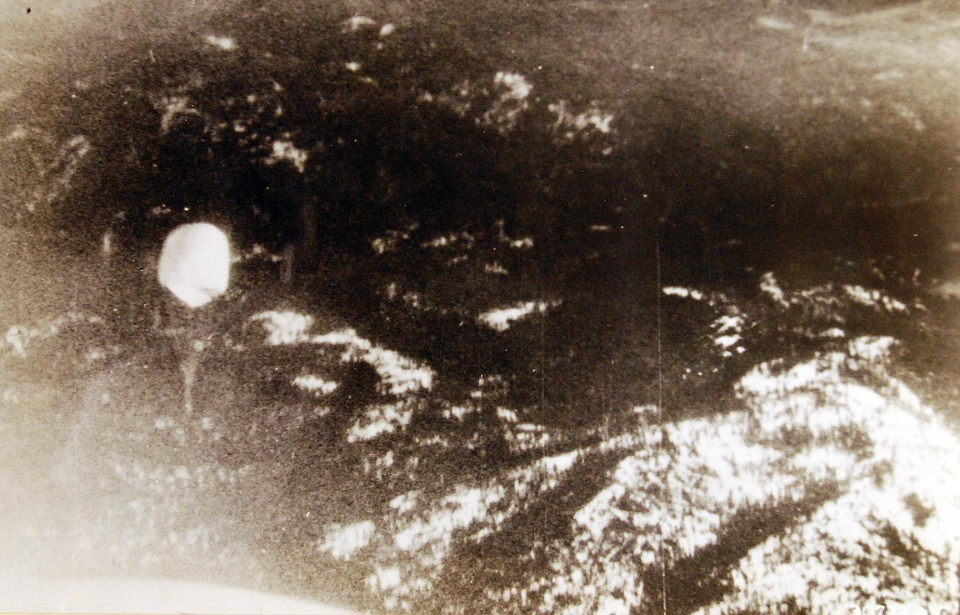Many Americans assume that, prior to 9/11, the US hadn’t suffered an attack on its own soil since Pearl Harbor in World War II. However, this is far from true, as the country was actually attacked several times after the surprise assault on December 7, 1941. The following list features eight times the US was attacked during the conflict, complete with espionage and fire balloons.
Japan’s attack on Pearl Harbor
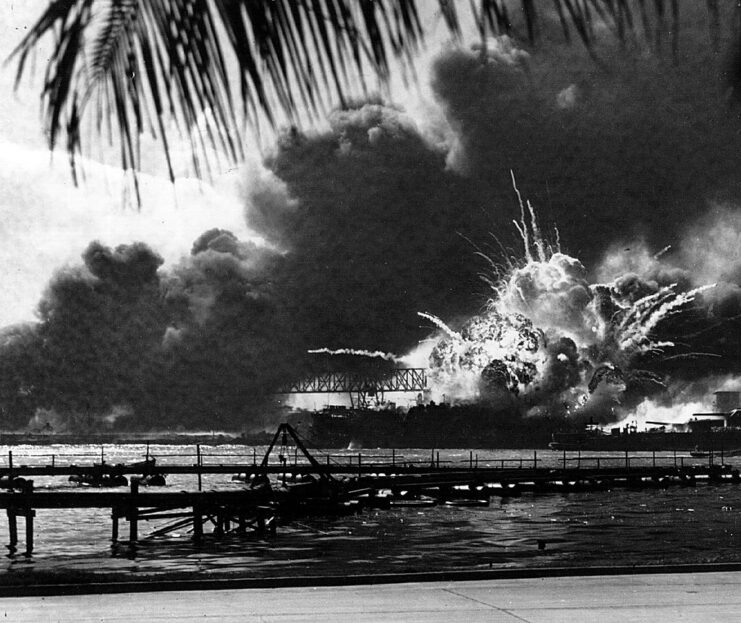
While Hawaii wasn’t yet a state when the Japanese launched their surprise attack on Pearl Harbor in December 1941, it was a US territory, which is why we’re including it on our list of times the country was attacked on home soil during World War II.
In the lead-up to the events of December 7, the Japanese had spent decades building their military and economic might, hoping to become a world superpower. As the nation’s colonial conquests entered the South Pacific, countries with territories in the region, such as the US and the UK, began to impose sanctions, worsening already strained tensions.
Wanting to prevent the US from halting the nation’s ambitions, Japan decided to launch an attack that would devastate the US Navy’s fleet.
While the assault on Pearl Harbor did inflict severe damage and cause thousands of casualties, the majority of the ships that wound up playing a key role in the Pacific Theater weren’t moored there, meaning the Americans were able to put up intense resistance to Japanese movements in the region across the Second World War.
Fu-Go (Japanese fire balloons)
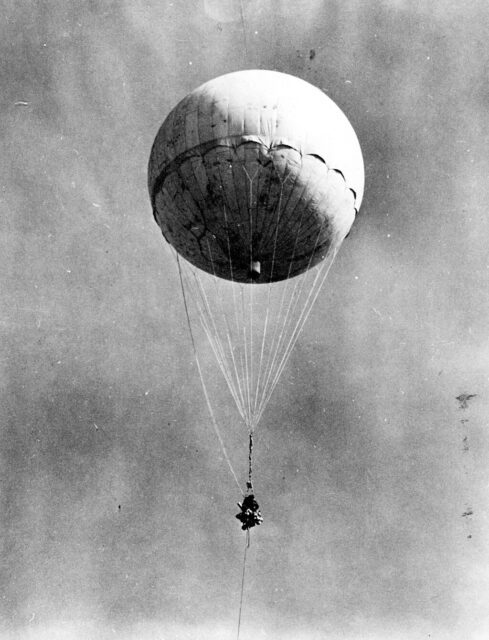
The first item on our list of attacks the US experienced on home soil during World War II is probably the most significant when debunking the untrue belief that the country was never struck during the conflict, outside of Pearl Harbor. From 1944 onward, Japan deployed fire balloons, equipped with either a single 30-pound bomb or four incendiaries, across the Pacific, intending to start forest fires and incite panic.
The concept first originated in the 1930s, but was largely forgotten until the Dolittle Raid in April 1942. When the attacks began in November 1944, the US government responded by requesting media outlets avoid reporting on them, to both not worry the public and confuse the Imperial Japanese Army (IJA).
Japan launched 9,300 of these fire balloons throughout the final year of the war, with only 300 known to have made it to the US. That being said, it’s believed many of the others simply landed in uninhabited areas and were never found. One such instance of this was in May 1945, when a pregnant woman and five children were killed after stumbling across one in an Oregon forest.
Known as Fu-Go, these were the first intercontinental weapons ever used and remained the longest-range attacks in military history until Britain’s Operation Black Buck in 1982, during the Falklands War.
Japanese shelling of Fort Stevens, Oregon
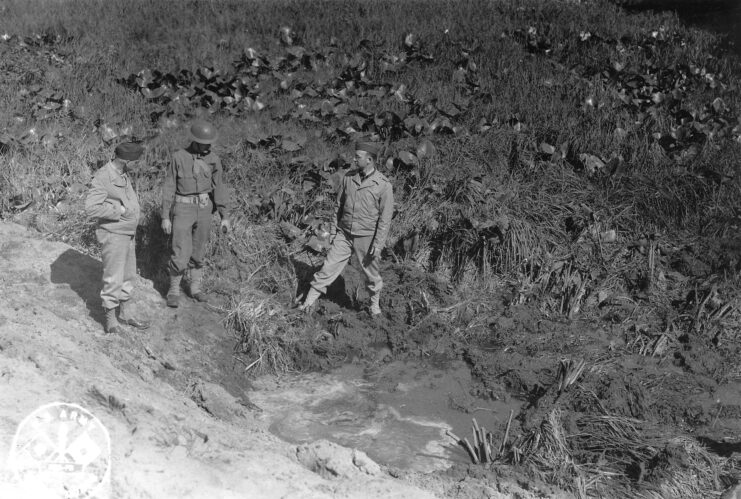
On the night of June 21, 1942, Japanese submarine I-25 surfaced near the Oregon coast and shelled the defenses of Fort Stevens. The vessel had silently followed fishing boats to pass through the minefields that had been erected around the coast, stopping 10 miles from the defensive structure. The submarine then fired seventeen 5.5-inch shells, which inflicted essentially no damage at all.
When the shots started landing around them, the men stationed at Fort Stevens were asleep in their bunks. They quickly sprang into action and made their way to their stations in the pitch black, forbidden from turning on any lights. However, once at their stations, their commanders refused to let them open fire, as it would reveal the fort’s exact position and its capabilities.
As with the creation of the Fu-Go, this attack was in retaliation to the Doolittle Raid. Similarly, it was one of Japan’s many attempts to attack Americans on US soil during World War II.
Battle of Dutch Harbor
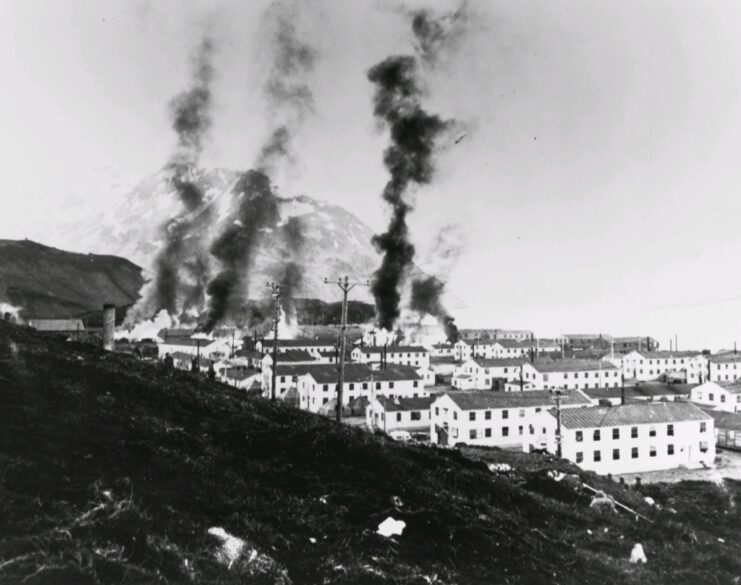
Kicking off the Aleutian Islands Campaign, the Battle of Dutch Harbor saw the Imperial Japanese Navy (IJN) launch strikes against the Dutch Harbor Naval Operations Base and Fort Mears, US Army in June 1942.
In the early hours of June 3, a Japanese strike force, consisting of two aircraft carriers – Ryūjō and Jun’yō – and escort ships launched a bomber strike on Dutch Harbor, consisting of Aichi D3As, Mitsubishi A6M Zeros and Nakajima B5Ns. The men stationed there were caught off-guard and hurried to their positions. Several on the ground were killed.
The Japanese launched a second attack the next day, targeting the likes of fuel tanks, aircraft hangars, soldiers’ barracks and ships moored along the shore. By the end of the action, 43 Americans had lost their lives, compared to just 10 Japanese airmen. As well, Ryūjō and Jun’yō suffered no damage.
Operation Pastorius
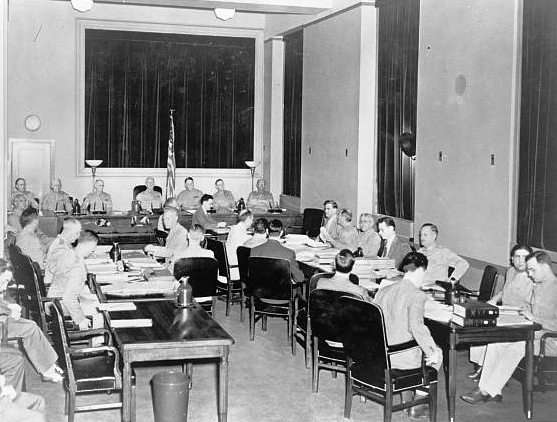
Many of the assaults on the US during World War II were perpetrated by the Japanese, but, in 1942, the Germans also attempted to attack Americans at home, with the use of naturalized citizens.
Known as Operation Pastorius, it saw four operatives hop out of a U-boat near the New York coast and make their way to land, armed with disguises, money and explosives. A second team was en route to Florida. The eight men were tasked with crippling American industry from the inside, hampering the country’s ability to wage war. It was also hoped the efforts would impact the public’s morale enough to make them want to exit the conflict.
Fortunately for the American public and industry, these spies were useless. With questionable backgrounds and only 18 days of training, their mission went awry almost as soon as it started. They were immediately spotted by the US Coast Guard upon their arrival, but managed to escape, prompting a large-scale manhunt.
This mattered little, however, as the leader of Operation Pastorius, George John Dasch, ultimately betrayed the mission to the Federal Bureau of Investigation (FBI). Six of the eight men were executed and the other two served six years in prison, before being returned to Germany. Sixteen others were also charged with aiding the operation.
Bombardment of Ellwood Oil Field
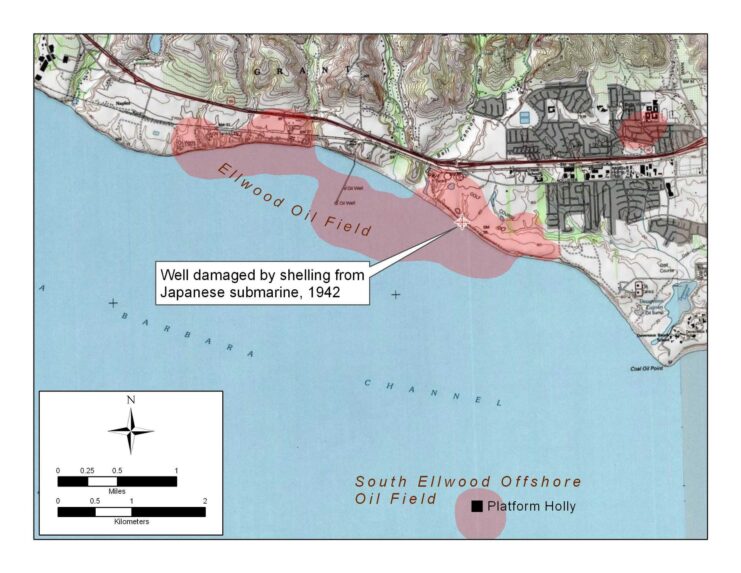
In February 1942, a few months before I-25 attacked Fort Stevens, Oregon, the Japanese submarine I-17 engaged in a similar action against an oil refinery on the California coast, signaling the first attack on the US mainland during World War II.
The bombardment of Ellwood Oil Field occurred on the evening of February 23. Similar to the I-25, I-17 surfaced 10 miles from the coast, but fired one less shot at the refinery site near Santa Barbara. Also like the former, the shots were completely wild and did next to no damage at all.
Despite this, the attack triggered a major panic on the US West Coast, influencing the government’s decision to intern Japanese-Americans throughout the war. The increased paranoia caused by the bombardment also led many in the area to wrongly believe enemy aircraft had flown over California the following night, in what’s now known as the Battle of Los Angeles.
Lookout Air Raids
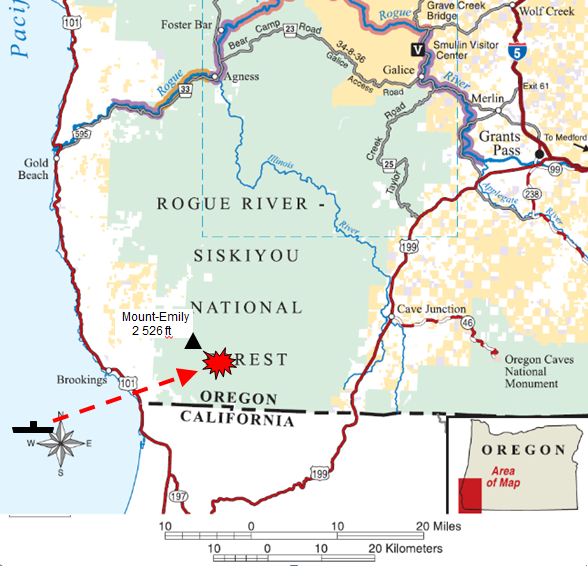
This pair of aerial bombings was yet another Japanese attack involving I-25 on the US mainland during World War II. Known as the Lookout Air Raids, the incendiaries were dropped by the Yokosuka E14Y carried by the submarine for reconnaissance, which her crew had realized could be used offensively.
In early September 1942, the lightweight floatplane, flown by Warrant Officer Nobuo Fujita and Petty Officer Okuda Shoji and armed with incendiary devices, flew to a forested and mountainous area near Brookings, Oregon. While these bombs did start a blaze, they caused little damage, thanks to quick-acting fire lookouts and unfavorable weather conditions.
A second assault occurred later that month, with the incident overall constituting the first time the contiguous US had been bombed by enemy aircraft.
Duquesne Spy Ring
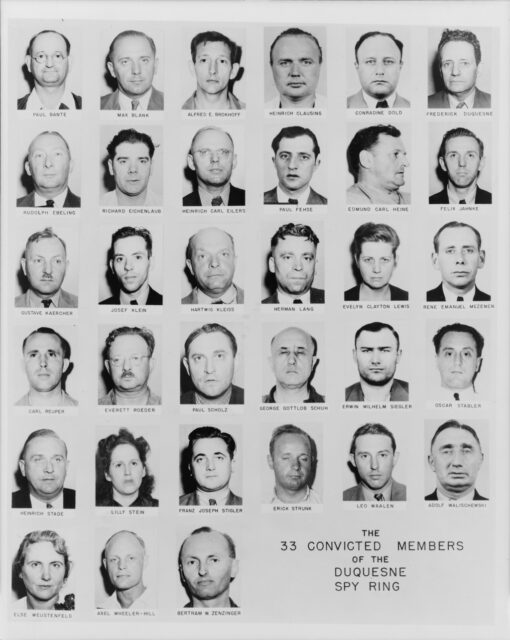
The Germans opted for more covert action on US soil during World War II, as opposed to outright attacks. Along with Operation Pastorius, the country also set up an extensive spy ring in the country. The only problem: it was busted before America had even joined the conflict.
A total of 33 individuals were involved in the spy ring, including its namesake, Frederick Joubert Duquesne. In the 1930s, they all came to the US and got civilian jobs that would allow them access to military secrets and shipping patterns. They were successful for a time – that is, until a new recruit and double agent, William Sebold, helped identify and weed them out for the FBI.
More from us: The Irish Postmistress Whose Weather Forecast Changed the Course of D-Day
After collecting enough evidence to secure guilty verdicts, the federal agency began to round up members. Nineteen immediately pleaded guilty, while the remaining stood trial and were subsequently convicted. To this day, the Duquesne Spy Ring remains the largest case of espionage in US history.
